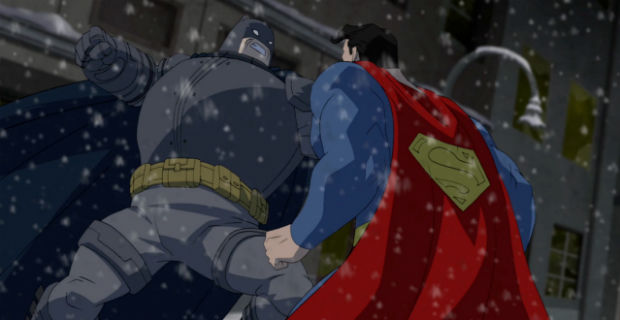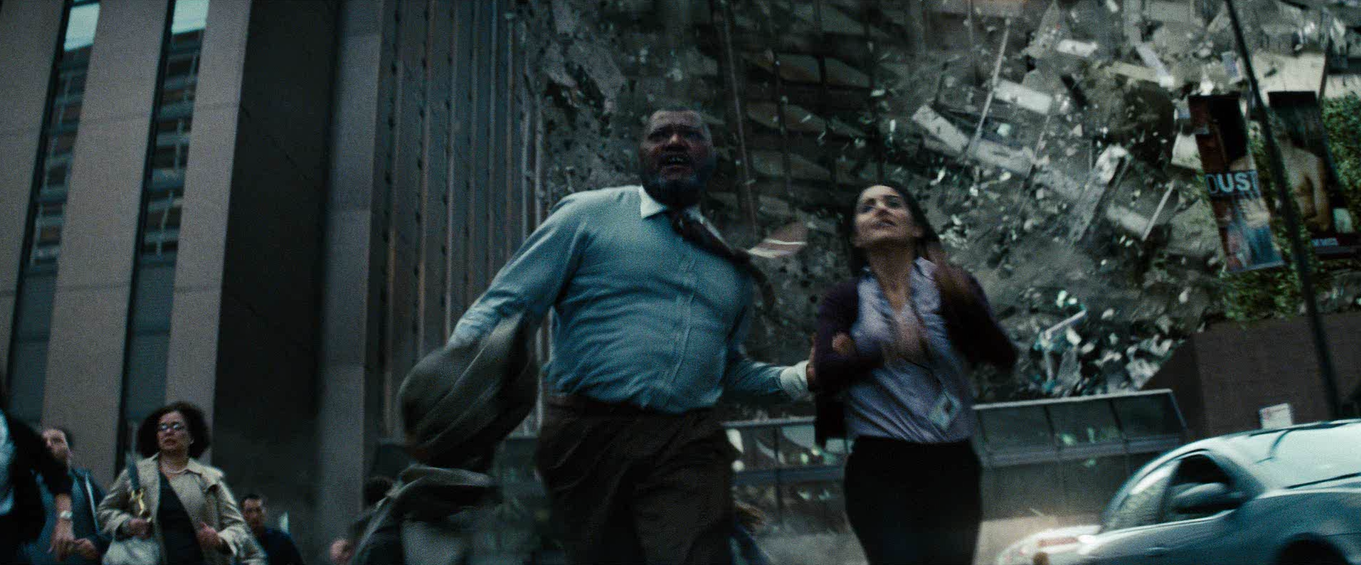In “Batman v Superman,” Why are They Fighting? Where Did the Story Originate?
At first glance (and probably second, and third), Batman V. Superman (2016) sounds like some kind of fan-service gimmick. Those who aren’t avid comic book readers and don’t know the concept is pulled from Frank Miller’s (Daredevil, Sin City, 300) famous 1986 comic book The Dark Knight Returns may find themselves wondering why two iconic superheroes — good guys, no less — are seemingly at odds with one another. What is the motivation here? Is there a real story being told with plausible meaning, or is this some goofy premise like Freddy vs. Jason (2003) paying service to two separate fan bases with one mash-up? The answer: Yes.
In The Dark Knight Returns, Miller envisioned Batman as an aging hero, living out his days in Gotham, Robin-less, in a dilapidated version of Wayne Manor, unsettled with the progress of Gotham City. Despite all his years of fighting crime and bringing comfort to the citizens of Gotham, the loonies just keep on causing trouble. At the same time, Superman is the prominent day-saver thanks to his effective immortality. The basis for the story: conflicted ideologies. Batman doesn’t think having a deity in charge of peacekeeping is smart, while Superman views Batman’s rogue heroism as dangerous and braggadocious. The struggle is the manner in which two heroes define “good” in different ways.

The Dark Knight Returns (2012)
ScreenRant summarizes the comic: “The Dark Knight Returns revolves around a 55-year old Bruce Wayne, who has hung up his cape and cowl and retired after years of battling crime as the masked vigilante Batman. However, rising levels of violence and unlawful conduct in Gotham City inspire Bruce to resurrect his Caped Crusader alter-ego and return to action – something that not only prompts his most dangerous foes to get back in the game, but in time puts the Dark Knight at odds with the U.S. government and its ‘ally’ (or ‘lackey,’ as seen through Bruce’s eyes), Superman.”
As it turns out, Batman V. Superman is modeled on that premise but doesn’t do much to preserve the ideologies that made the original comic work. It also injects so many plotlines into its new story that motivations are consistently unclear. Why Batman (Ben Affleck) and Superman (Henry Cavill) are fighting becomes less of a film adaptation of source material and more of a sloppy avenue for introducing a new Batman, a new Wonder Woman (Gal Gadot), and setting up the Suicide Squad movie due out in late 2016, with a Justice League entry hitting theaters sometime after. The film’s subtitle, after all, is Dawn of Justice, which already makes it feel like the pair will work things out in the end. It seems that whatever this film is about, the takeaway is that its antics will lead to the formation of the Justice League. (In fact, Zack Snyder more or less admitted that is one of the film’s ulterior motives.)
Zack Snyder also confirmed that his film has moments of homage to Miller’s classic comic but isn’t much of an adaptation. As Vox explains, “The reason Wayne wants to fight Superman is that Superman caused too much damage to Metropolis, and Wayne thinks a fight will make Superman and the world more cognizant of his capabilities. Or maybe it’s because Wayne is still sad over his parents’ deaths and experiencing some sort of hyper PTSD. Or, wait — is it because Wayne thinks everyone is too into authoritarianism to see how insane it is to trust Superman? Perhaps it’s because Wayne is jealous of Superman. Or maybe he simply can’t see past Lex Luthor’s (Jesse Eisenberg) tricks and an ongoing media narrative that Superman is dangerous… This is where you wish Snyder had stuck to Miller’s simple blueprint: that these two men just don’t see justice the same way. None of Wayne’s reasons for war are made clear enough, but they’re all sort of there, flaccid and dying from a lack of sunlight and oxygen. There’s a great Batman v Superman film to be made about how we mythologize our heroes and why our trust in them depends on how human we think our enemy is, but whatever Snyder created here is not it.”
In Man of Steel (2013), Superman saved Metropolis while he simultaneously destroyed most of it. Facing the facts, Superman earns his name by being something beyond human. Whether he is a deity or an alien, his immense power that defies the laws of humanity concern some people, Batman included. As such, Batman recognizes Superman’s good intentions while understanding the gravity of his power, considering the possibility that he could become a threat that needs stopped.

Destruction in Man of Steel (2013)
“That son of a bitch brought the war to us two years ago,” Batman says to Alfred (Jeremy Irons). “Jesus, Alfred, count the dead. Thousands of people. What’s next, billions? He has the power to wipe out the entire human race and if we believe there is even a one per cent chance that he is our enemy, then we have to take it as an absolute certainty and we have to destroy him.”
Meanwhile, Superman has similar feelings about Batman. He sees vigilante crime fighting as something to be stopped, and he’s just the man to stop it.
Of course, there’s also Lex Luthor (Jesse Eisenberg), who moviegoers are likely tiring of seeing as Superman’s recurrent nemesis. Luthor may be nuts, but he also sees an opportunity for two great superheroes, one of whom stands as his arch nemesis, to do battle. Whoever wins, Luthor wins, unless they see through their differences and team up with some other superheroes, of course…
Additionally, pitting Batman against Superman seems technically mismatched, as Superman has super-human strength, X-Ray vision, superhuman hearing, can fly and basically doesn’t age. Batman in this film is an older rich fellow in a fancy suit with a bunch of luxurious tools. Still, Snyder and the fight choreographer maintain the fight is even and the match makes sense.
Unfortunately, as simple as the motivation for the film’s premise could have been, it is part of a multi-layered story which critics are saying doesn’t come together. At least now you know more about where the idea of their fight was born and how it has evolved (or mangled) for film 30 years later.

